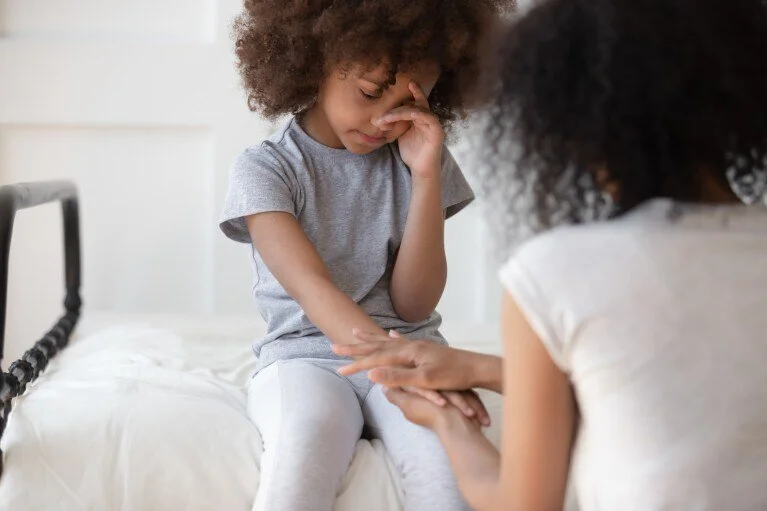As a teacher of young children from ages 4-8 for many years, one of my most often asked questions by parents is how to support their child’s big feelings at home.
Space for Big Feelings
As children grow and mature, they develop better communication skills to manage big emotions. Adult support, however, is still needed for kids to learn the coping strategies for those challenging moments. Whatever the trigger for them - a general frustration, a reaction to a given consequence, or an inability to express themselves, if a child’s feelings lead to a challenging emotion, they might need time and space before talking it out with you. A common desire for parents is to address the situation right away, when kids are in the middle of an emotional moment. Resist and find ways to support your child in calming down first.
Why Space?
You can prepare for these moments together by strategizing a safe and comfortable cool down spot. Not only can this be a fun activity, it also empowers your child to have agency in managing their own emotions! Check to see if your child’s teacher uses a calm spot or similar strategies in their classroom. This can be helpful in strengthening the home-school connection and reinforcing these constructive behaviors. Just like in school, review the importance of being calm and in control of our mind and bodies in order to think clearly and make good decisions. Big feelings can get in the way of learning and other things we may want to do!
Setting it up
Have a conversation about creating a special place to calm down from big feelings. This should be a place for independence, just for them. Come up with a special name together to identify the space - cool down zone, cozy corner, thinking spot!
Present a couple of safe options for this space around the home and take their lead. Maybe it’s a corner in their room, inside a tent, a comfy chair, or the cozy nook of a hallway!
*Next, brainstorm a few activities that they find calming to keep in the area. Ask, “What do you think would be relaxing to do when you’re angry, frustrated, sad?” Practice some of these strategies together and remind them that these activities can be helpful in calming our minds and bodies.
Some suggestions:
A drawing pad with colors
Books you’ve read together or books the child can read independently
A music listening device
Watching the sand drop down a sand timer
A calming glitter jar (google it!)
A box of legos
A stuffed animal
They may also enjoy decorating the spot with cozy items like a pillow, blanket, etc.
Last but not least...PRACTICE TOGETHER! You could model for your child the beginning to end process of using the spot to cool down from big feelings.
Identify what’s going on - How do we know when we have big feelings? How is our body reacting? What kind of feeling is it - anger, sadness, frustration? It’s important your child be able to identify these feelings, so they recognize when to use their special spot.
Use the spot! Try all the different calming down activities together, talk about which ones they like, and discuss how some might be better suited for different kinds of feelings.
Remind them that you will always check in on them afterwards so that you can figure out solutions together. They can also independently check in with you! Once this has become a routine, your child will learn to use it on their own and even recognize when they’re calm and ready to talk. Until they gain independence, your child may need extra encouragement, prompting and possibly your coaching in walking and talking them through some strategies in the moment.
The Reconciliation Phase
And what about after they’re calm? Once your child has regained control of themselves, they are in a much better place to talk it out, listen, and figure out next steps:
Acknowledge the big feelings
Compliment them on going to their cool down spot
Check in briefly on what strategies helped them regain control this time
Finally review the situation that led to big feelings and offer solutions.
A few final points - it is important to figure out the balance between giving your child enough time to cool down but also ensure that they return to you or you check in with them in a timely manner. This amount of time depends on the child’s personality and the situation. Sometimes setting rules around a timer can be helpful! It’s also crucial that the language and tone used around this special spot is positive and not punitive, like a traditional time out. The intention is completely different. This is a paradigm shift from controlling your child’s behavior through shame to supporting them in building self-control.
Remember, the more agency you give to your child to regulate their feelings, the more independent they will become! Creating a space for big feelings at home can be a positive step in this direction!
*Step 3 strategies and more are also featured in the digital game, Wisdom: The World of Emotions.



